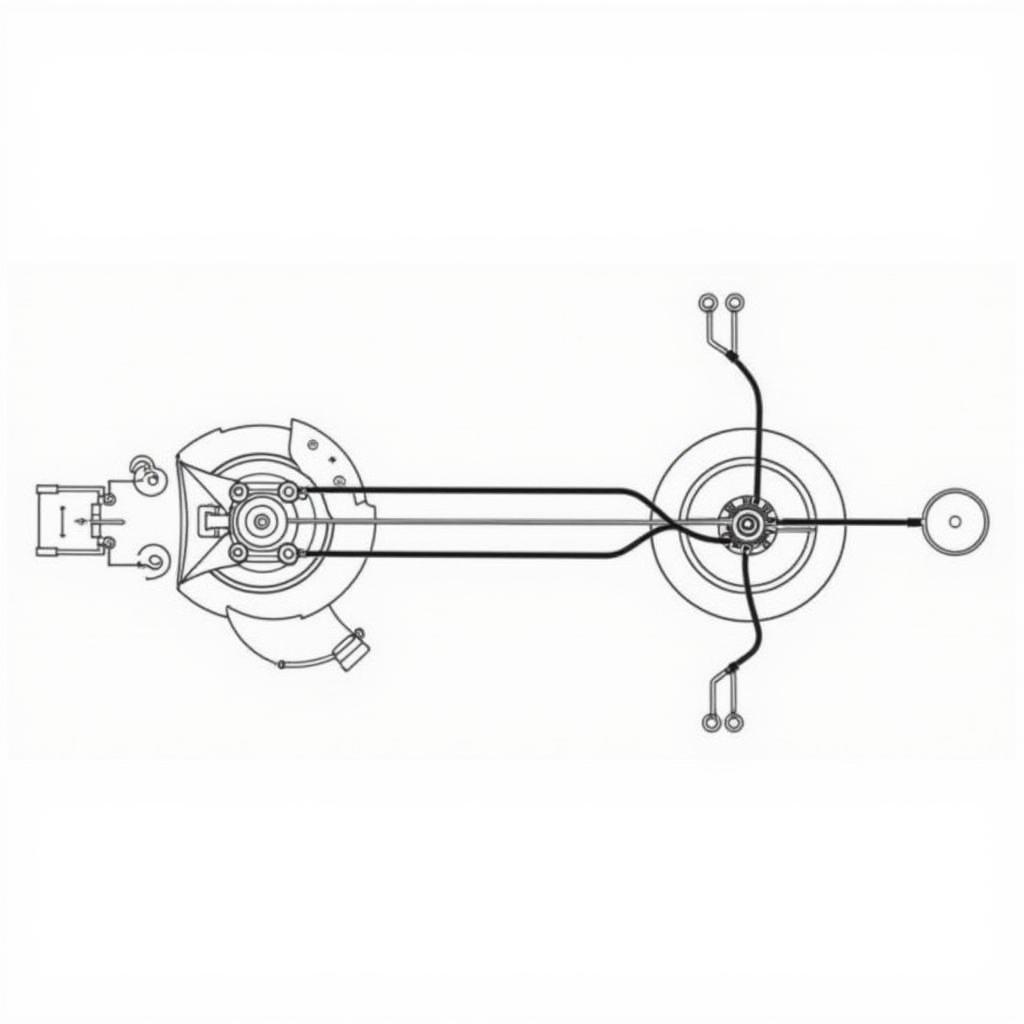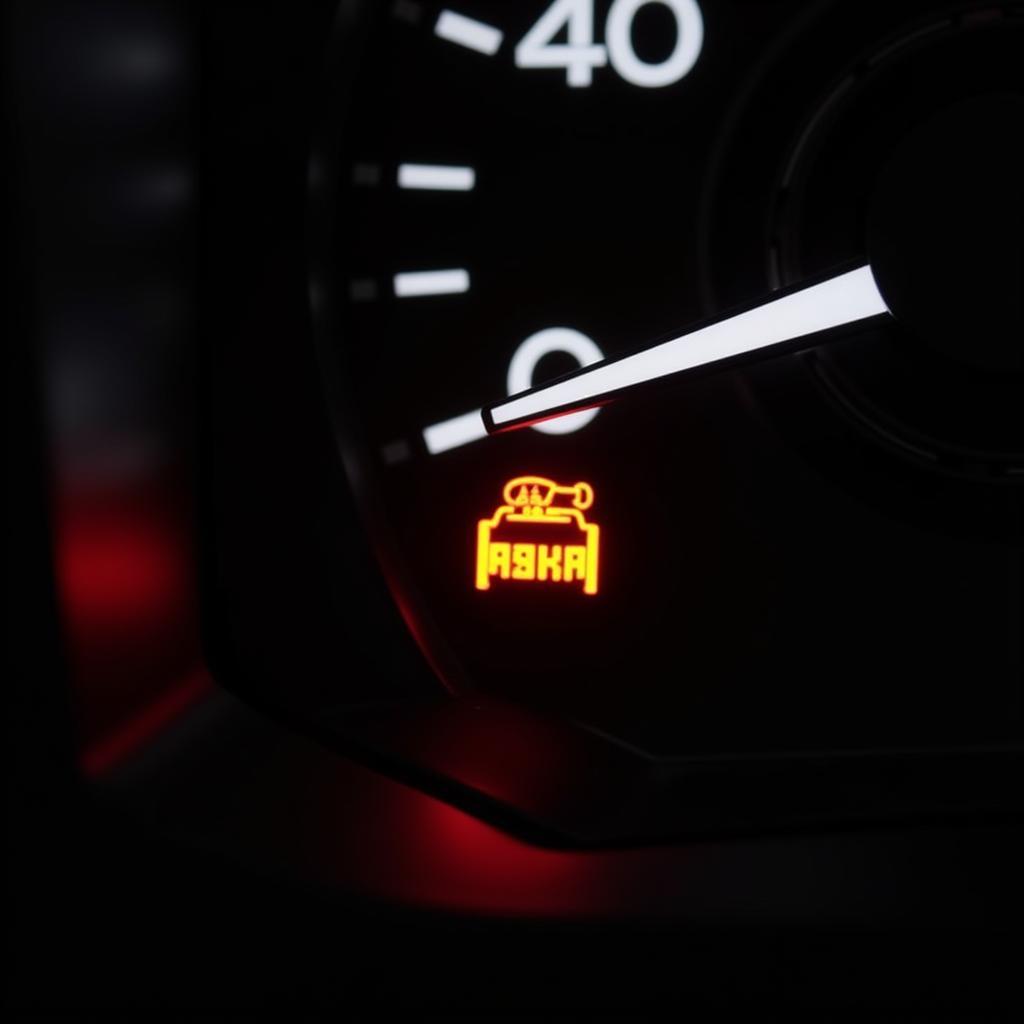The brake warning light on your 2011 Subaru Legacy is a crucial safety feature that should never be ignored. It illuminates on your dashboard to alert you of potential issues within your braking system, ranging from low brake fluid to more serious problems. This comprehensive guide will explore the common causes behind this warning light and provide you with effective solutions to address them.
Understanding Your Subaru Legacy’s Brake System
Your Subaru Legacy utilizes a sophisticated hydraulic braking system that relies on brake fluid to transmit force from the brake pedal to the wheels, ultimately slowing down or stopping your vehicle. When you press the brake pedal, it activates a piston in the master cylinder, pressurizing the brake fluid and forcing it through the brake lines. This pressure then acts upon the brake calipers, pushing the brake pads against the rotors, generating the friction needed to stop the vehicle.
 Subaru Legacy Brake System
Subaru Legacy Brake System
Common Causes of a Brake Warning Light
1. Low Brake Fluid Level:
One of the most common reasons for the brake warning light to turn on is a low brake fluid level. Brake fluid is essential for transmitting the force you apply to the brake pedal to the brakes themselves. Over time, brake pads wear down, and this can cause the fluid level in the master cylinder to drop.
Solution:
Park your Subaru Legacy on a level surface and check the brake fluid level in the reservoir. If the fluid level is below the “MIN” mark, carefully add the recommended brake fluid (typically DOT 3 or DOT 4). Consult your owner’s manual for the correct type and instructions.
2. Worn Brake Pads:
Brake pads are designed to wear down over time. As they thin, the brake pistons need to extend further to apply the same amount of pressure. This can lead to a lower brake fluid level and trigger the warning light.
Solution:
Inspect your brake pads by looking through the spaces between the wheel’s spokes. If the pads are less than ¼ inch thick, it’s time for a replacement. Consider having a professional mechanic replace the pads, as it involves working with essential safety components.
3. Brake Fluid Leak:
A leak anywhere in your brake system, from the master cylinder to the brake lines or calipers, can cause a drop in brake fluid pressure and illuminate the warning light.
Solution:
Inspect the ground beneath your Subaru Legacy for any signs of brake fluid leaks. Look for wet spots that are oily and have a light brown to yellowish color. If you suspect a leak, immediately take your vehicle to a qualified mechanic for diagnosis and repair.
4. Faulty Brake Light Switch:
In some cases, a malfunctioning brake light switch can cause the brake warning light to illuminate, even if there are no issues with the brake system itself.
Solution:
The brake light switch is typically located near the brake pedal under the dashboard. A mechanic can test the switch and replace it if necessary.
5. ABS System Malfunction:
Modern vehicles like your Subaru Legacy are equipped with an Anti-lock Braking System (ABS). If the ABS control module detects a fault within the system, it can trigger the brake warning light.
Solution:
Diagnosing ABS issues requires specialized equipment. It’s best to take your vehicle to a mechanic specializing in Subaru vehicles for a proper diagnosis and repair.
Expert Insights
“Ignoring a brake warning light can have serious consequences,” says John Smith, a certified automotive technician with over 20 years of experience working on Subaru vehicles. “It’s always best to err on the side of caution and have your braking system inspected by a qualified professional as soon as possible.”
 Subaru Technician Inspecting a Vehicle
Subaru Technician Inspecting a Vehicle
Conclusion
A glowing brake warning light in your 2011 Subaru Legacy is a serious safety concern that should never be ignored. By understanding the common causes and solutions outlined in this guide, you can take the appropriate steps to ensure your braking system operates effectively, keeping you and your passengers safe on the road. Remember, regular maintenance and timely inspections by qualified professionals are crucial for preventing brake-related issues and ensuring the longevity of your vehicle’s braking system.

